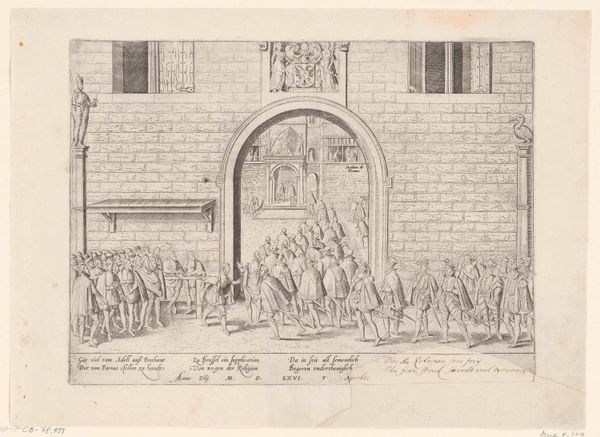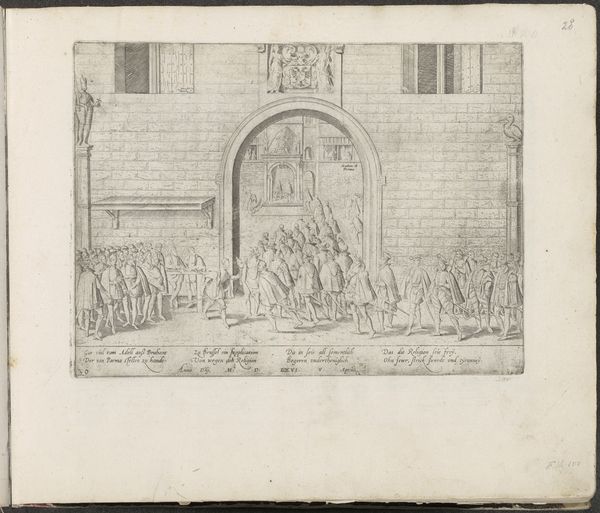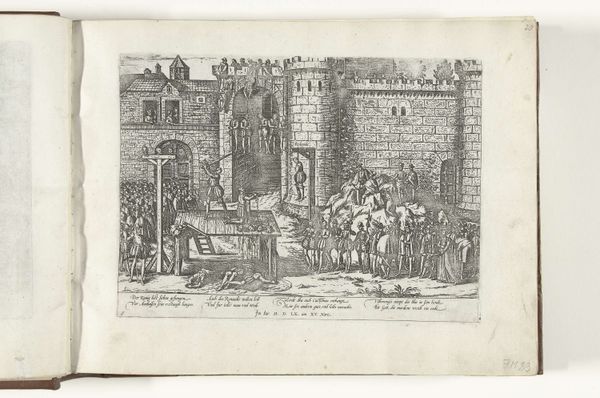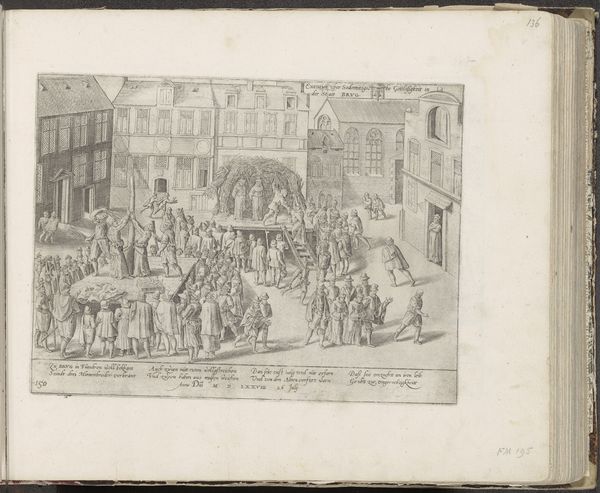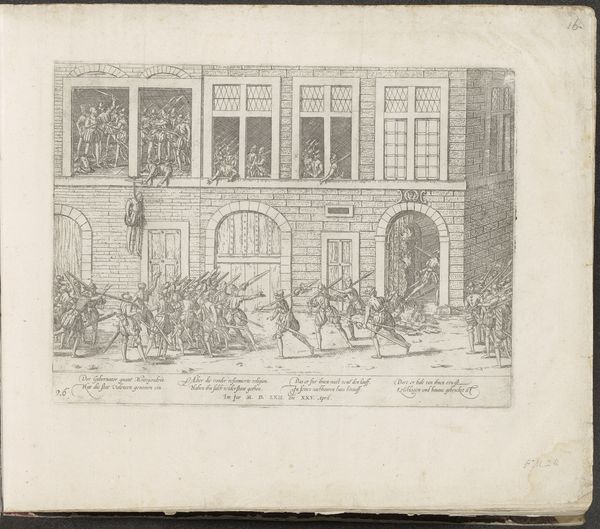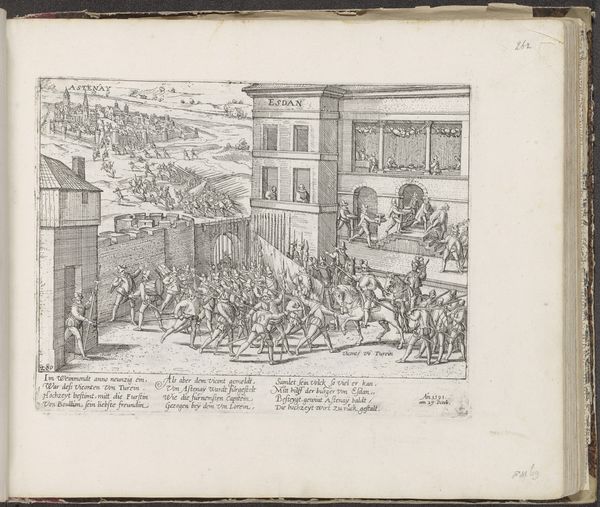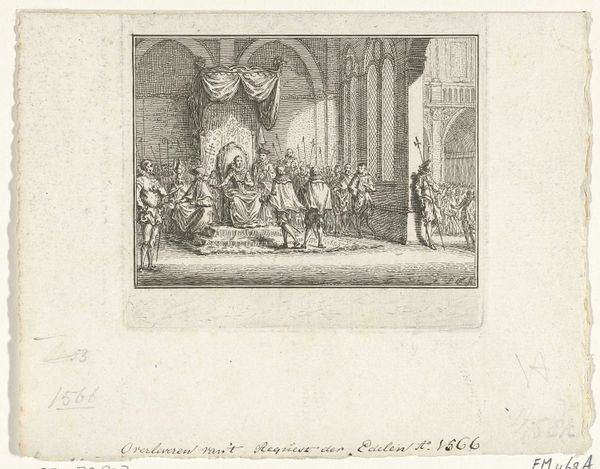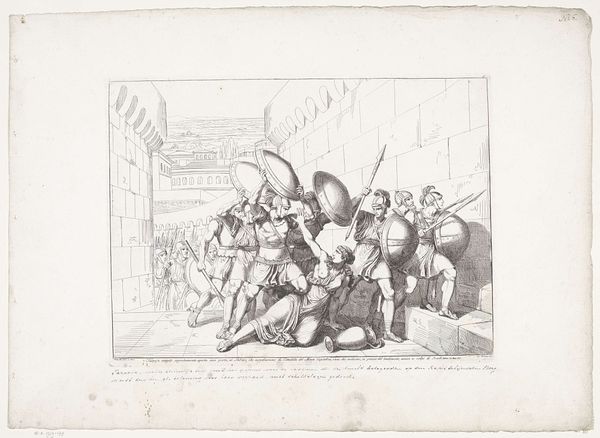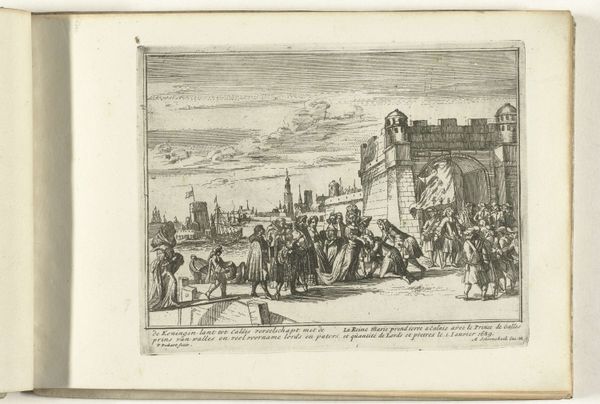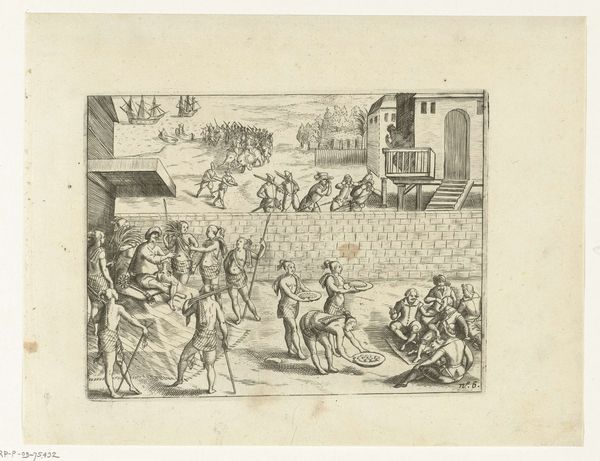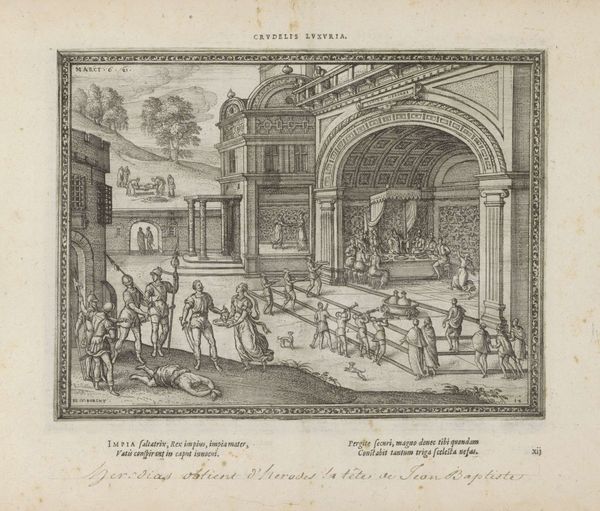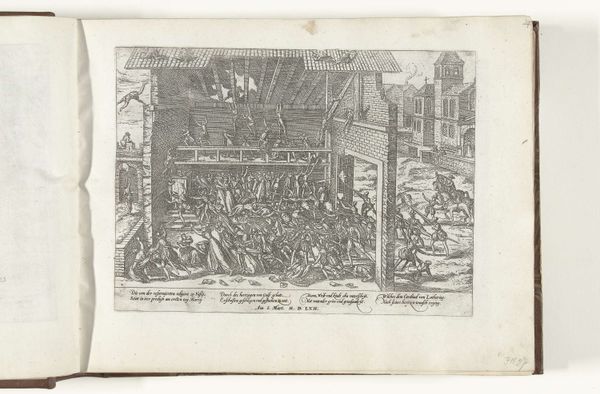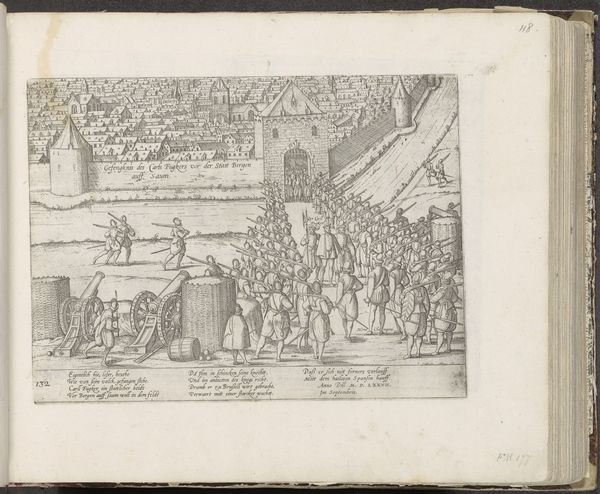
print, paper, engraving
#
narrative-art
# print
#
figuration
#
paper
#
11_renaissance
#
line
#
history-painting
#
northern-renaissance
#
engraving
Dimensions: height 210 mm, width 280 mm
Copyright: Rijks Museum: Open Domain
Curator: This engraving by Frans Hogenberg, created between 1566 and 1570, captures a pivotal moment: the presentation of the Petition of the Nobles in 1566. Editor: It looks incredibly formal, but also somehow constricted. The lines are very precise, almost rigid, creating a sense of tension despite the orderly scene. The gray color of the print adds a gravity that contrasts with the historical weightiness of the moment depicted. Curator: The artist’s intent, however, was explicitly celebratory. We must view this in the context of the Beeldenstorm, a period marked by iconoclasm, fueled by religious and political tensions in the Netherlands. Hogenberg immortalizes the nobles' attempt to seek moderation of the placards, advocating for greater religious freedoms. This engraving becomes an artefact of resistance to religious and political oppression in its own time. Editor: I see that, but let’s not ignore that only wealthy, white, cisgender noblemen are pictured. For some, demanding freedom of religion for protestants likely was also about protecting existing patriarchal power structures, including, ironically, the exploitation and disenfranchisement of the laboring class. And for most, the concern wouldn’t extend to the situation for anyone other than other men of similar class. Curator: That’s certainly a vital point. It's critical to examine who is represented in the image, and who is not. While seemingly a step towards liberty, its selective focus reveals the limits of enfranchisement in 16th-century Netherlands. Hogenberg uses a classical archway framing the action, lending legitimacy and seriousness to the occasion, thereby positioning his subject as acting justly within historical continuity. Editor: It reminds me that freedom, equality, and even justice are ideas shaped and experienced differently depending on one’s social position, their race, class, or gender identity, none of which is reflected in the singular story of liberty delivered through this artwork. Still, this engraving serves as a vital record. Curator: Absolutely. Considering this print allows us to dissect its layered historical context while also challenging its presentation of freedom as an exclusive experience. Editor: An invaluable reminder to critique art not only for what it shows, but also what it omits from its historical narrative.
Comments
No comments
Be the first to comment and join the conversation on the ultimate creative platform.
